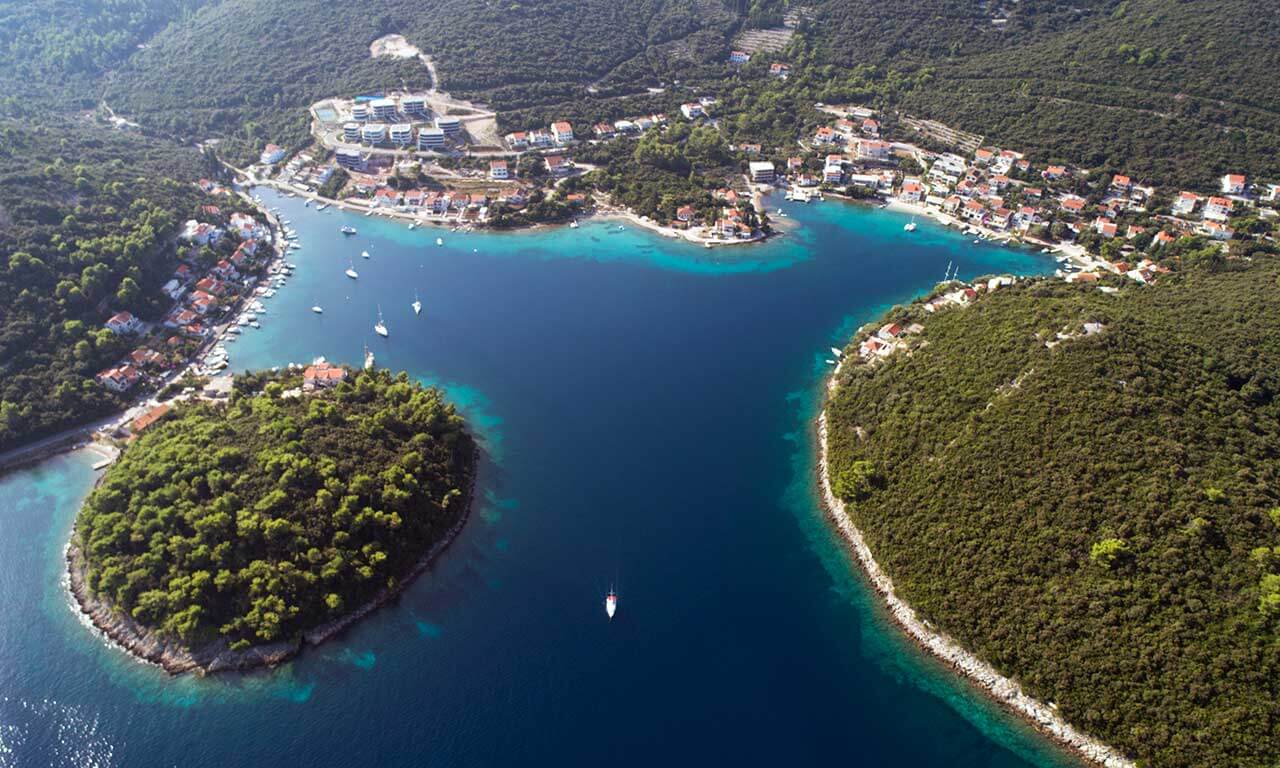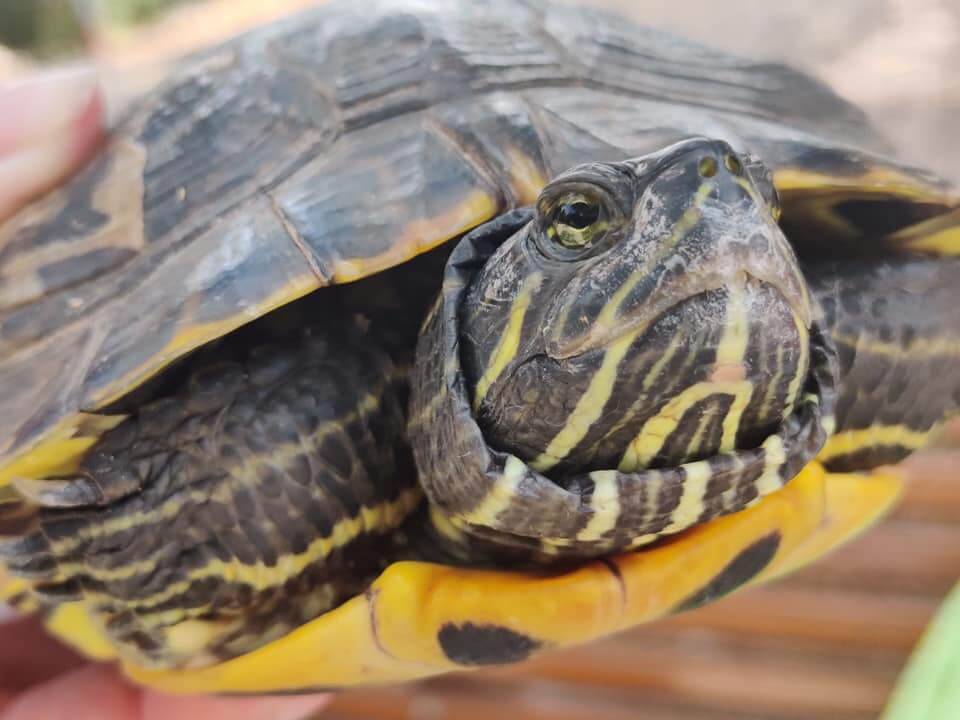Mediterranean Monk Seal Supposedly Sighted After 10 Years Near Pag
October 7, 2021 - The last time a Mediterranean monk seal was seen in Croatian waters was in 2011, near Proboj. In the past, the species was hunted vilely, and therefore its small population and the rarity of its sighting. Ten years later, fishermen have once again seen one swimming in the waters of Pag.
A Mediterranean monk seal was spotted in the waters of the island of Pag, writes Morski.hr. According to the information of several fishermen, the Mediterranean monk seal was seen in the Pag Gate at the junction of the Pag Bay and the Velebit Channel, and in the area of Punta sv. Nicholas.
As Radio Pag reminds us, the Mediterranean monk seal on the island of Pag was researched more than 30 years ago by prof.dr.sc. Hrvoje Gomerčić from the Faculty of Veterinary Medicine in Zagreb, who stated in his paper on this research that two Mediterranean monk seals had a habitat near the Pag Bridge.
During the research, Professor Gomerčić stated that as early as the beginning of the 1990s, this pair of Mediterranean monk seals were no longer seen in their habitat. The Mediterranean monk seal was seen again on Pag in 2008 near Dinjiška, and in 2011 near Proboj, and now ten years later it has been seen in the waters of Pag.
It is assumed that these are Mediterranean monk seals that came to Pag from another area, but there are also opinions that they may live permanently in the waters of Pag. The answer to this question, however, should be given by experts.
The Mediterranean monk seal (Monachus monachus) lives on reefs, in caves and grottoes, in isolated and hard-to-reach rocky areas. There is enough of all this on the shores of the island of Pag and that is why scientists believe that Pag is an ideal area for the life of the Mediterranean monk seal.
Although it was a resident of the Adriatic, it is known that in 1964 the last specimen of the Mediterranean monk seal that lived in the Croatian part of the Adriatic was killed. This species was exterminated in the Adriatic mainly by fishermen and fishing tools, so it did not exist for decades. It reappeared in the early 2000s, and the last one seen in the northern Adriatic, in 2014, died of old age. Since then, there have been no members of its species in the Croatian sea, just as there were none before it.
The Mediterranean monk seal is protected by the Nature Protection Act, and according to the Ordinance on the amount of compensation for damage caused by illegal actions on protected animal species, the fine for killing a Mediterranean monk seal is 100,000 kuna. The Mediterranean monk seal is one of the most endangered marine mammals and probably the rarest seal in the world.
Source: Jutarnji List
For more information about the Mediterranean monk seal, check its profile at the Blue World Institute website.
For more, make sure to check out our lifestyle section.
Injured Turtle in Korčula Bay: Rescued, Treated, Ready For New Life
July 17, 2021 - An injured turtle in Korčula Bay sparked immediate action by locals and vets, seeing the turtle being saved and getting a second chance.
Like many other places, towns, locations, and neighborhoods, Korčula also has groups on social media to ease communication among users who share the same place of daily life. Friday afternoon saw residents of Korčula have a big heart, and despite might being stereotypically perceived as laid back, chilled chaps (as for every Mediterranian-culture impacted people), they were quick to act when needed.
A user under the name Antoni Ja, one of the members of the FB group Oglasnik otoka Korčule (Korčula Island Message Board), reported on a 20 kilo turtle floating in the sea in Žrnovska Banja. Floating, the keyword.
„Please do something, so it doesn't get hit by a speedboat or some maniac“, said Antoni Ja.
Other users immediately started to worry if the turtle was injured, and the name of a local vet Vilović was suggested as an address to report the issue.
Sure enough, Vilović examined the turtle, and the 20-kilo turtle turned out to be over 50 kilos. Not quite often seen in shallow waters, but nevertheless a normal turtle size in the Adriatic sea.
„It had a head wound, most likely from the propeller. It is on its way to the Specialist in Split by catamaran“, briefly commented Vilović.
Indeed, as the photo on the FB group published by Ana Jurić shows, the turtle was on its way to Split.
„Kudos to the vet and the guys that organized all this, and the turtle is huge!“ wrote Jurić.

Zrnovska Banja where the turtle was spotted floating © Visit Korcula
Dr. Mario Gavranović, head of the VET VISION clinic in Split, confirmed that the turtle arrived on Friday night. „It should arrive in an hour or two. The propeller injury is an old wound and I will first have to examine it to see what is the proper way of treatment“, said Dr. Gavranović.
When contacted on Saturday morning to provide more information on what happened to the turtle, dr. Gavranović wasn't in his office. As confirmed by Aquarium Pula, the reason was Gavranović took the turtle to the aquarium which also has a Marine turtles rescue centre.
"The turtle is alright, on its way and should be in the Centre around midday", briefly confirmed Aquairum Pula.
Pula's rescue centre has been active for around 17 years (with turtles being strictly protected in Croatia since 1995 as one of the most endangered animal species), and Morski.hr wrote in 2019 how the centre cured over 100 turtles.

One of the many rescued turtles by Marine turtles rescue centre © Aquarium Pula
Croatia loves its animals
With vets displaying their expertise, locals on Korčula once again demonstrated their compassion and big heart when it comes to animals. And that compassion is not different from the general mood in Croatia.
With the nourishing of the recently deceased stork Malena being the most famous story of love between Croatians and animals, there were plenty of other examples too. From rejoicing every time whales or dolphins are spotted, when sheep visited the Zadar mall or when a Croatian reality TV star Jasmin Kunišinac raised a fox.
Unfortunately, Croatia also records cases of animal cruelty, such as the poisoning of cats and dogs, and each time Croatian public met it with a fierce backlash and anger for such acts.
Despite quite often arguing about everything imaginable and unimaginable, Croatians also express solidarity with each other when things get tough. For instance, many cities canceled their new year celebrations and relocated the money to Petrinja following its earthquake, as well as Croatian entrepreneurs too. But, many more instances of help were noted over the years.
Learn more about Korčula on our TC page.
For more about animals in Croatia, follow TCN's dedicated page.
Croatian Divers Discover Dangerous Jellyfish in Istrian Waters
June the 14th, 2021 - A warning has been issued to swimmers in the southern Istrian part of the Adriatic after Croatian divers stumbled upon a dangerous type of jellyfish.
When swimming in the calm and peaceful Croatian Adriatic, it's difficult to imagine that anything could be lurking down in the depths where you can't see. The crystal clear waters allow for a view of all of the fish and other marine creatures living down below, but rarely do we imagine coming to some harm.
Although sharks do live in the Croatian Adriatic, they pose little to no threat and much prefer to avoid any contant with humans, making being able to see and film them a delight rather than the cause of a panic attack. The most common injury caused by a resident of the Adriatic is one by a sea urchin, who can pack a punch with its spikes when accidentally stepped on.
Jellyfish, however, are quite another story indeed, and a recent discovery is of a type which does more than deliver an uncomfortable but generally harmless sting.
As Poslovni Dnevnik writes, Croatian divers spotted the dangerous jellyfish (Pelagia noctiluca) on Sunday in the south of Istria. Being stung by this jellyfish causes severe pain, and upon contact with human skin, the creature causes agonising injuries similar to burns that are then very difficult to heal.
This jellyfish, which has numerous names - the mauve stinger, the purple-striped jelly, the purple stinger, the purple people eater, the purple jellyfish, the luminous jellyfish and the night-light jellyfish, is a relatively small creature with a semicircular head and pink tentacles, sprinkled with tiny purple dots.
As stated, upon contact with human skin, severe pain occurs and injuries similar to burns appear, which are difficult to heal, followed by depigmentation of the skin and even deep scarring, local portal Glas Istre writes.
This jellyfish was spotted by the Croatian divers on Sunday in the bay of Velika Kolumbarica near the Kamenjak peninsula. Sea currents and waves sometimes carry these jellyfish to the shore, where they'd prefer not to be, and where they become a threat to swimmers.
For more, follow our lifestyle section.


